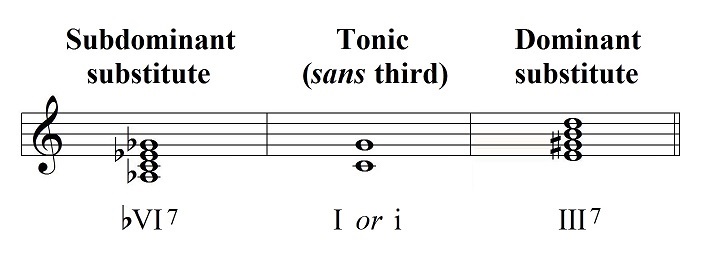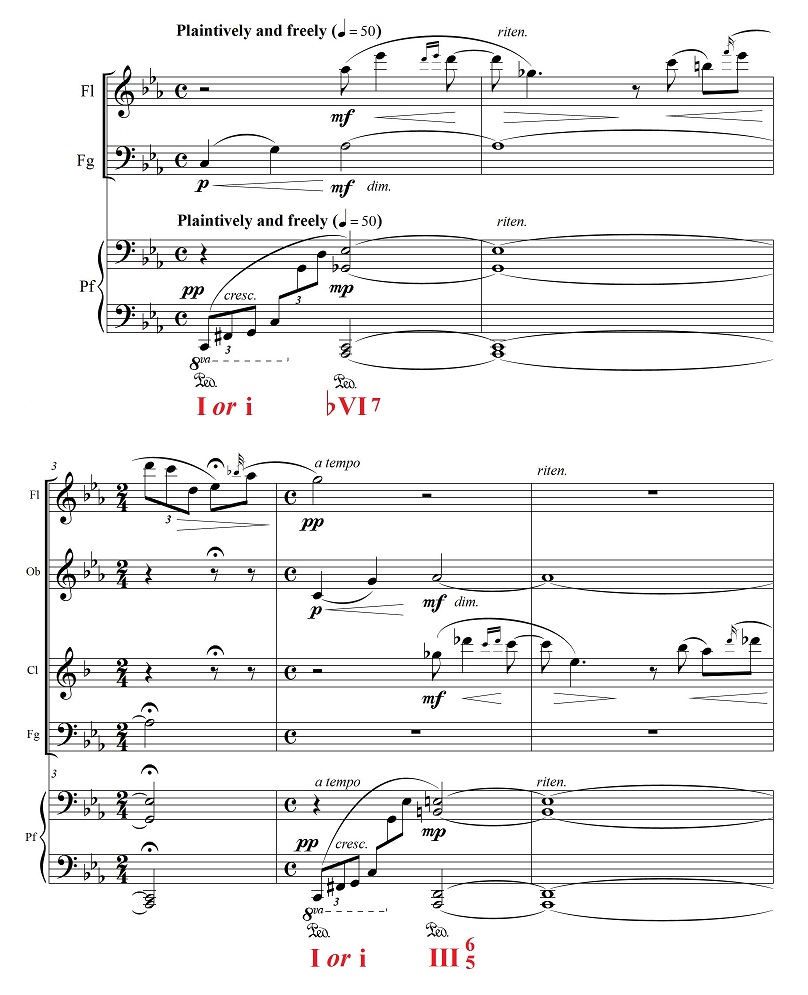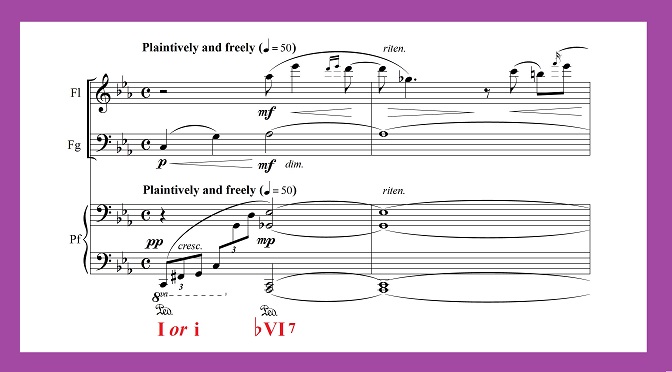Rhapsodic Harmonies
Harmonically, a typical classical work begins by defining the tonality to the listener, through the use of tonic flanked by subdominant and dominant chords. The beginning of a Romantic work may do the same thing, but using more subtle harmonies. In my last post to this blog, I explained why the chords bVI and III, spaced a major third below and above the tonic, can function as colorful Romantic substitutes for subdominant and dominant triads respectively.

Notice that in the “Romantic” version (right side of the diagram), the roots of the three chords divide the octave into equal parts. In this case, the roots Ab and E are not only separated from the tonic C by four half steps, but the two pitch classes are also separated from each other by the same distance (+/- multiples of the octave, of course).
The opening of my Rhapsody for Woodwinds and Piano uses seventh chords based on those same roots — bVI7 and III7 — for the same purpose, namely, establishing the tonal center of C.

The first two beats of the first measure (ignoring the nonharmonic neighbor tones) presents the tonic triad with the third omitted. We sense that we are probably in the key of C, but are left in suspense as to whether the mode will be major or minor. A mournful flute solo begins on the third beat, supported in the piano and bassoon by a major-minor seventh chord with root Ab (bVI7), which functions as a subdominant substitute.

The tonic sans third reappears in the first two beats of bar 4, followed by a clarinet solo that echoes the preceding flute. The solo is supported in the piano and oboe by a major-minor seventh chord with root E (III7). The chord is placed in first inversion, so that the bass can share the common tone with the previous bVI7 chord, and the G# is spelled as Ab in the score for convenience within the key signature.
Since the bVI7 chord seems to point toward the minor mode and III7 toward major, the true mode of the piece remains a mystery at this point. The remainder of the work’s introduction presents a large-scale movement through subdominant and dominant harmony to the tonic. As the bassoon intones the main melody (starting in bar 16), the clouds of mystery are lifted and the tonality is heard unmistakably as a sunny C major.

